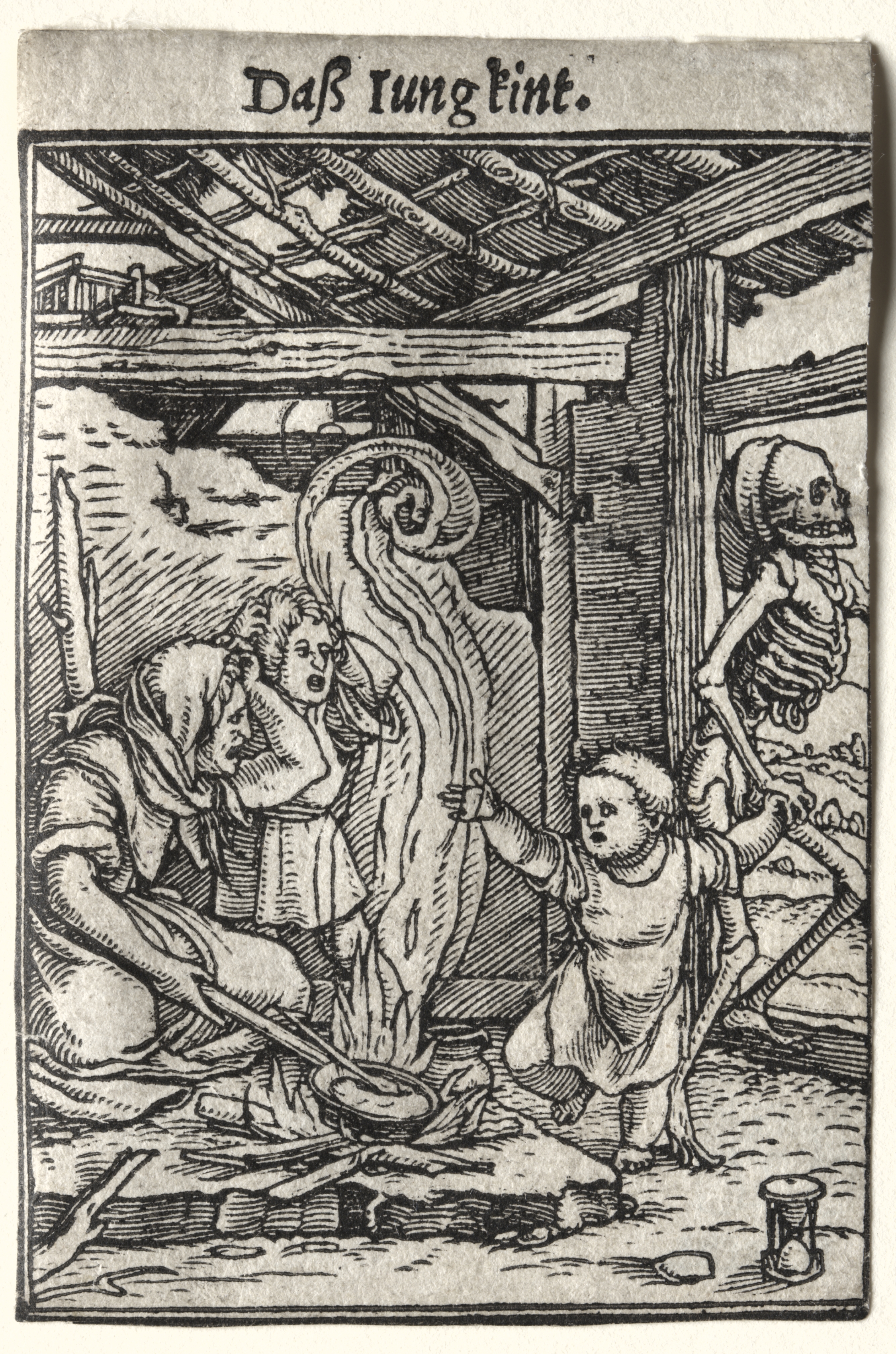The Cleveland Museum of Art
Collection Online as of April 19, 2024

Dance of Death: The Child
c. 1526
(German, active England and Switzerland, 1497/98–1543)
Gift of The Print Club of Cleveland 1929.169
Catalogue raisonné: Passavant vol.3.366.38
Location: not on view
Description
Dance of Death is the most celebrated series of woodcuts designed by Holbein. The forty-one blocks were cut by Hans Lützelburger in the years immediately before his death in 1526, though the set was not published until 1538. Dance of Death originated as a drama in the middle of the 14th century. Following widespread epidemics such as the black plague, these plays took place in a cemetery or churchyard. Actors, dressed in pale costumes painted to resemble skeletons, personified Death and summoned a group of people from all social classes in a dancelike procession. In a period when the life span was short, the purpose of the Dance of Death was to remind the populace to prepare for the Last Judgement.- "Woodcuts: Dance of Death Series by Hans Holbein the Younger." The Bulletin of the Cleveland Museum of Art 16, no. 8 (October 1929): 141-151. Mentioned: p. 141 www.jstor.org
- Against the Grain: Woodcuts from the Collection. The Cleveland Museum of Art, Cleveland, OH (organizer) (August 17-November 9, 2003).From Block Books to Baskin: Artists as Illustrators. The Cleveland Museum of Art, Cleveland, OH (organizer) (May 13-August 17, 1986).Exhibition of Prints by the Little Masters: Prints form the Museum Collection. The Cleveland Museum of Art, Cleveland, OH (organizer) (March 23-April 24, 1938).
- {{cite web|title=Dance of Death: The Child|url=false|author=Hans Holbein the Younger|year=c. 1526|access-date=19 April 2024|publisher=Cleveland Museum of Art}}
Source URL:
https://www.clevelandart.org/art/1929.169